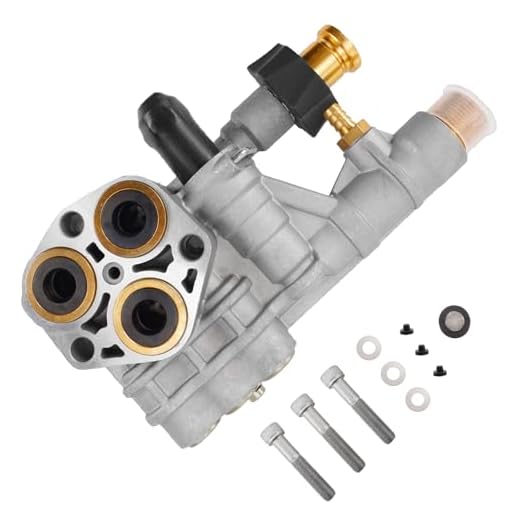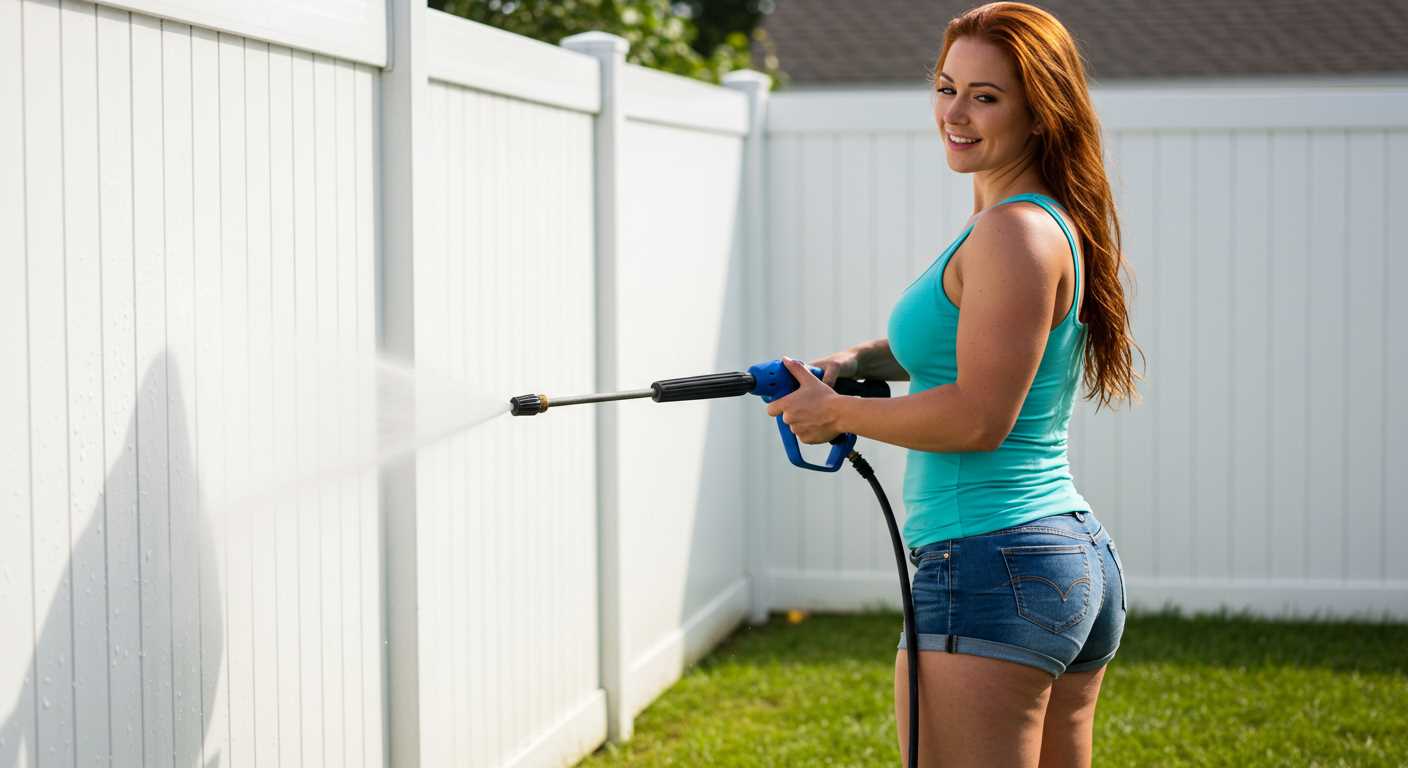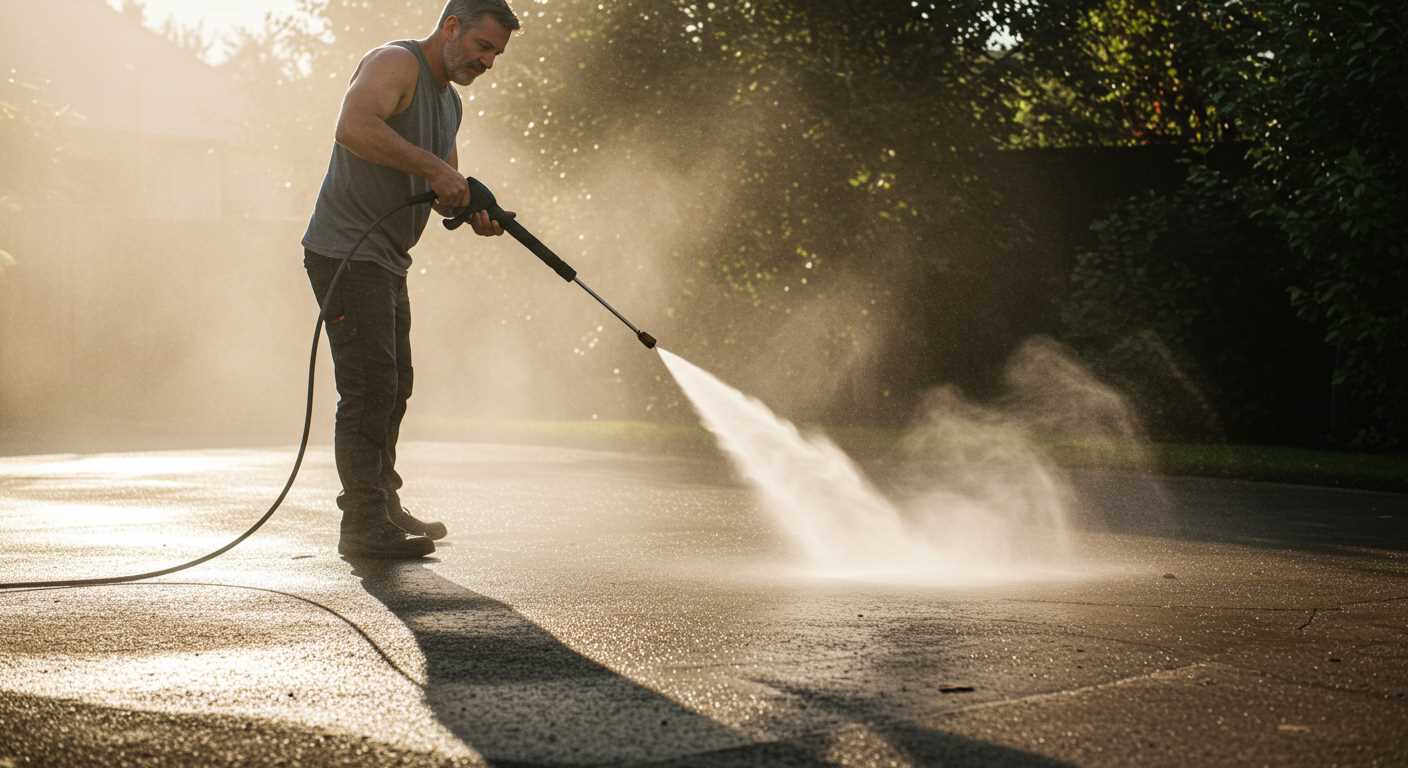

In my extensive experience with various cleaning machines, I’ve found that pump compatibility isn’t as straightforward as one might hope. Many factors determine whether a specific pump can be replaced by another, including the mounting configuration, flow rate, and pressure specifications. Therefore, before attempting to swap out one model for another, it’s crucial to consult manufacturer specifications and compatibility charts.
When selecting a replacement, pay attention to the type of connectors and the orientation of the inlet and outlet ports. A mismatch here can lead to improper fitting and potential leaks. Additionally, consider the materials used in the construction of the original pump and the replacement; using different materials can notably affect performance and longevity. Ensure that the new unit meets or exceeds the performance ratings of the original to maintain efficiency during operations.
Moreover, take into account the power requirements; any change in pump design might necessitate adjustments in electrical systems or drive belts. Always refer to a detailed guide or manual specific to your equipment for insights on suitable replacements. This diligence will not only save time but also ensure optimal functionality and safety.
Interchangeability of Cleaning Equipment Components
I recommend assessing compatibility based on design specifications rather than assuming that components from different models will fit seamlessly. Variability in mounting configurations, connections, and pressure ratings can complicate the replacement process. Ensure you have the technical documentation or manufacturer specifications on hand to confirm whether a substitute will function properly in your machine.
Key Specifications to Consider
| Specification | Description |
|---|---|
| Mounting Style | Check if the attachment points align and match your unit’s framework. |
| Flow Rate | The gallons per minute (GPM) rating should be equal or compatible to maintain functionality. |
| Pressure Rating | Ensure the pressure range aligns with the operational limits of your appliance. |
| Inlet/Outlet Fittings | Compatibility of hose connections is crucial for preventing leaks or damage. |
| Materials | Verify that components are made from durable materials to withstand the forces encountered. |
Recommendations for Replacement

Before acquiring any alternative unit, I suggest consulting with the equipment manufacturer or a trusted supplier. Detailed comparison of the part numbers will guide you in selecting a viable candidate for your specific model. Additionally, consider the warranty implications of using non-original components, as it might affect future claims or repairs.
Understanding Pressure Washer Pump Types
When selecting a new unit, it’s crucial to distinguish between the different types of pumps available. The primary categories are axial cam pumps and triplex pumps. Each type serves specific applications, and knowing their characteristics helps in making the right choice.
Axial cam pumps are commonly found in lower-end models. They are lightweight and typically suitable for residential cleaning tasks. While they provide decent performance for light projects, their lifespan may be shorter due to wear and tear from frequent use.
On the other hand, triplex pumps are built for heavy-duty tasks. They feature three pistons, which allows for higher pressure and flow rates. These pumps are designed for longevity, making them ideal for professionals who rely on high-performance equipment regularly.
Another key aspect to consider is the pump’s materials. Brass fittings are more durable than plastic ones. When assessing options, focus on models with robust components to ensure reliability during intensive usage.
Additionally, check the flow rate (measured in litres per minute) and pressure (measured in bar or psi). A higher flow rate can result in faster cleaning, while increased pressure typically enhances cleaning effectiveness on tough surfaces.
Compatibility with existing components is essential as well. Always verify the mounting arrangements and the size of the inlet and outlet ports. Remember, a mismatched pump can lead to performance issues or even damage the entire system.
In summary, understanding pump types enables informed decisions when procuring or replacing equipment. Prioritise suitability for your specific needs, ensuring you get the right tool for the job.
Identifying Compatibility Factors for Pumps
To ensure a proper fit for replacement units, focus on three key compatibility factors: mounting style, displacement, and connection types. First, verify the mounting configuration. Each brand may have distinct bolt patterns or alignment requirements. Make sure to measure and match these specifications accurately.
Next, consider the displacement rate, which affects performance. Different models may offer various GPM (gallons per minute) outputs. It’s imperative to ensure that the new unit matches the existing specifications to maintain optimal efficiency and pressure levels.
Connection types are equally significant. Check the inlet and outlet specifications, as well as the hose fittings. Adapters might be available, but compatibility at this level can lead to leaks or diminished performance. Always cross-reference these details with the manufacturer’s documentation for a seamless fit.
Lastly, be aware of the pressure ratings. Ensure the new unit can handle the same or higher PSI (pounds per square inch) to maintain performance consistency during operation. Any mismatch can lead to significant functionality issues or even equipment failure.
Step-by-Step Guide to Pump Replacement
Begin by ensuring the power source is disconnected. This is crucial for safety during the replacement procedure.
1. Gather Required Tools and Materials
Collect necessary tools, including a wrench set, screwdrivers, and pliers. Additionally, have the replacement unit ready, along with a suitable gasket or sealant if applicable.
2. Remove the Existing Unit

Locate and loosen the mounting bolts that secure the current assembly. Gently detach it from the main unit, paying attention to any connecting hoses and wires. If there’s resistance, double-check for any additional fastenings that may not be immediately visible.
Carefully remove the water and detergent lines. Utilise the correct tools to prevent damaging the connections. Place the existing assembly in a safe location for later inspection or disposal.
3. Install the New Component
Align the replacement component with the mounting points. Ensure that it fits snugly against the main body. Secure it using the original screws or bolts, tightening progressively to avoid misalignment.
Reconnect any hoses as per the original setup, ensuring that all seals are intact and secure. Pay attention to any specific orientation requirements for the connections.
4. Test the Installation
Before reactivating the system, double-check that all connections are secure and there are no leaks. Briefly run the unit at low power to ensure everything functions correctly, then gradually increase pressure to confirm stability.
Monitor for any unusual sounds or leaks during the initial runtime. If issues arise, immediately disconnect the power and inspect the connections again.
5. Final Checks
Once satisfied with the installation, clean the area and properly dispose of any old components. Document the replacement for future reference, noting the new part number and installation date.
Common Mistakes When Swapping Pumps
Choosing an incompatible unit leads to frustration. Always verify mounting configurations and shaft sizes to ensure correct fit. Many overlook the importance of these measurements, resulting in costly returns or modifications.
Ignoring Specifications
.jpg)
Assuming all replacement parts function identically is a common pitfall. Each model may have specific ratings for flow rate and pressure. Not adhering to these specifications can lead to inefficiencies and premature wear. Review the technical documents before proceeding with a replacement.
Neglecting Accessories
Failure to consider associated components such as hoses, connectors, and seals is frequent. A new unit might need different fittings or additional accessories. Ensure all components are compatible; otherwise, you risk leaks or reduced performance. Always account for the entire system rather than just the core component.
Manufacturer Guidelines for Pump Interchangeability
Consult the manufacturer’s documentation before considering a pump replacement. Different brands and models may have specific compatibility requirements that are critical to maintaining functionality.
Following these guidelines can prevent mistakes:
- Model Specifications: Verify the specifications, including flow rate, pressure rating, and dimensions. Mismatched specifications can lead to performance issues or damage.
- Connection Types: Ensure that the inlet and outlet connections align with your original unit. Differences in fitting sizes can necessitate additional adapters or modifications.
- Mounting Configuration: Check how the pump attaches to the motor or frame. Different mounting systems may require adjustments or new parts for a secure fit.
- Warranty Information: Consider any warranty implications. Using a non-approved pump can void your warranty, leading to additional costs if repairs are needed later.
Stay informed about brand-specific recommendations. Different manufacturers often have their guidelines for optimal performance and safety standards. The use of proprietary parts may also enhance reliability and longevity.
Before making a decision, I recommend reaching out to customer support from the manufacturer. Queries regarding compatibility can clarify uncertainties and provide peace of mind.
Finally, always document any changes made during the replacement process. This information can be invaluable for future maintenance or troubleshooting.
Signs That You Need a New Pump
Watch for these clear indicators that suggest it’s time for a replacement of your unit’s pump:
- Loud Noises: Unusual sounds such as grinding or knocking can signal internal damage.
- Loss of Pressure: If the water flow significantly diminishes, it often points to wear and tear or failure inside the mechanism.
- Unusual Leaks: Water leaks around the pump body or connections indicate potential seal or housing issues.
- Overheating: Frequent overheating during operation can imply malfunction or inefficiency, suggesting a need for a new unit.
- Continuous Cycling: If it frequently turns on and off, this cycling can harm the motor and indicates pump failure.
- Extended Cleaning Times: Increased time taken to clean surfaces effectively shows that output is subpar.
- Inconsistent Performance: Fluctuating flow rates while using the equipment can denote a failing pump.
Address these signs promptly; neglecting them could lead to further complications or costly repairs. Assess your situation carefully and consider replacement options as needed.
FAQ:
Can I replace the pump on my pressure washer with a different brand?
While it is possible to replace the pump on your pressure washer with one from a different brand, compatibility is a significant factor. The mounting system, hose connections, and pressure specifications must match your original pump. It’s advisable to consult the owner’s manual or a technician to ensure that the new pump will work correctly with your machine.
Are all pressure washer pumps the same size?
No, pressure washer pumps come in various sizes, depending on the model and manufacturer. The size will affect how the pump fits into the washer and its performance. Always check the specifications of your existing pump and the one you are considering to ensure a proper fit.
What should I consider when looking for a replacement pump for my pressure washer?
When searching for a replacement pump, consider the following factors: compatibility with your pressure washer model, pressure rating (measured in PSI), flow rate (GPM), and connection types. It’s also wise to assess the warranty and customer reviews to gauge the reliability of the new pump. Taking these elements into account can help you choose a suitable replacement.
Can I upgrade to a more powerful pump on my existing pressure washer?
Upgrading to a more powerful pump is a decision that requires careful thought. While higher PSI and GPM ratings can improve cleaning performance, the existing pressure washer framework must be able to handle the increased power. This includes checking if the motor, hoses, and connectors can support the higher specifications. Consulting a professional for advice is recommended when considering such an upgrade.







